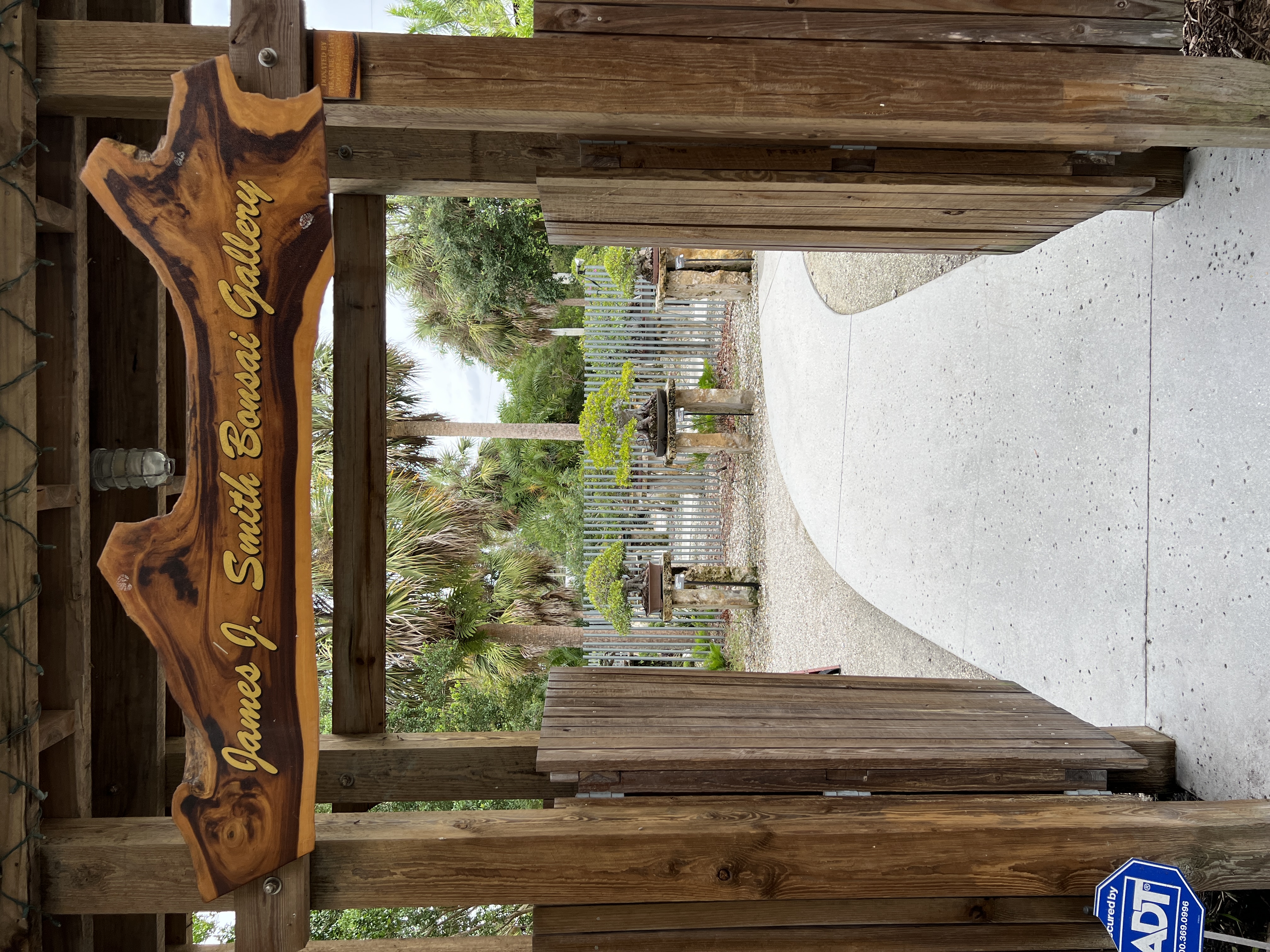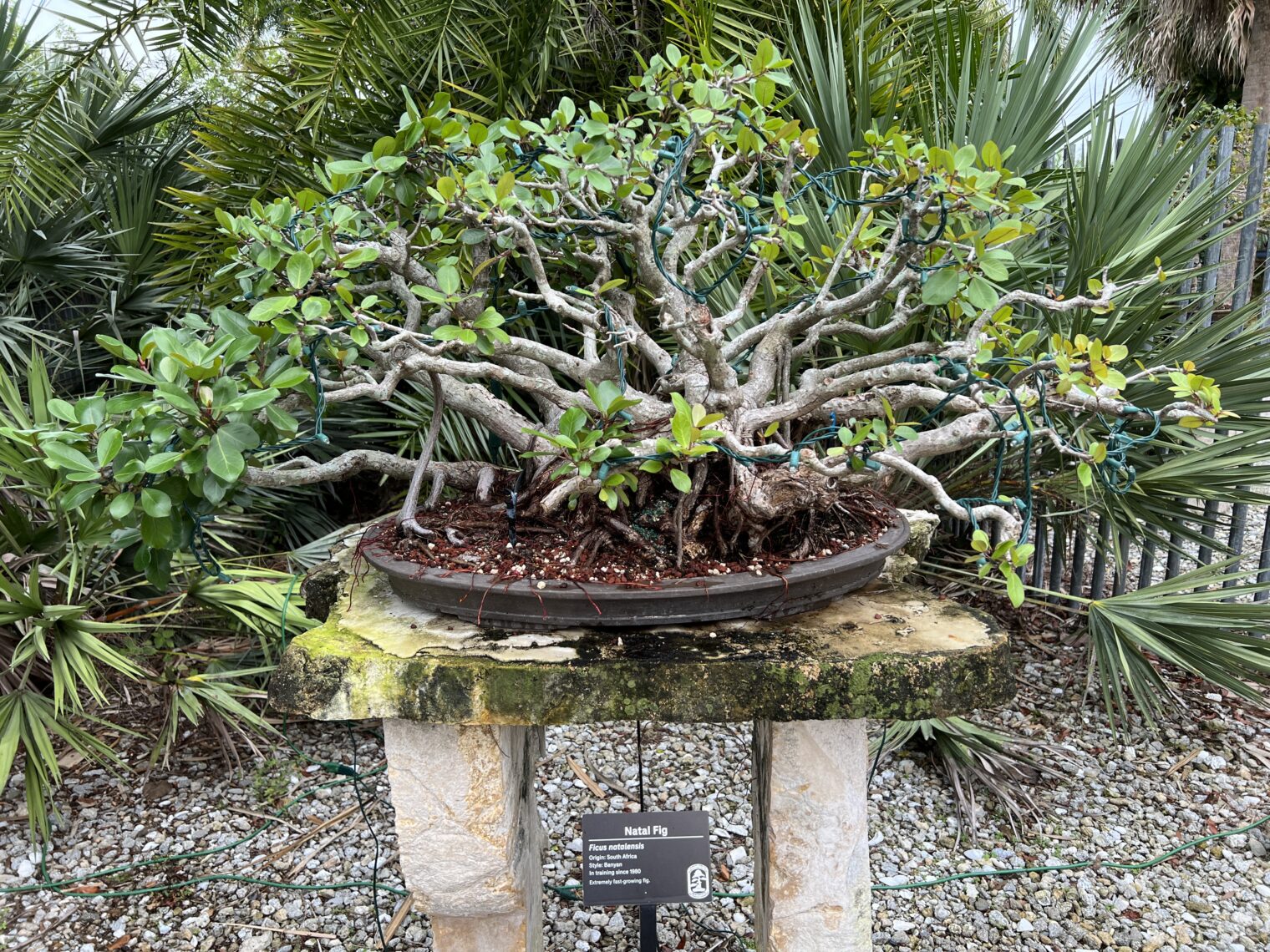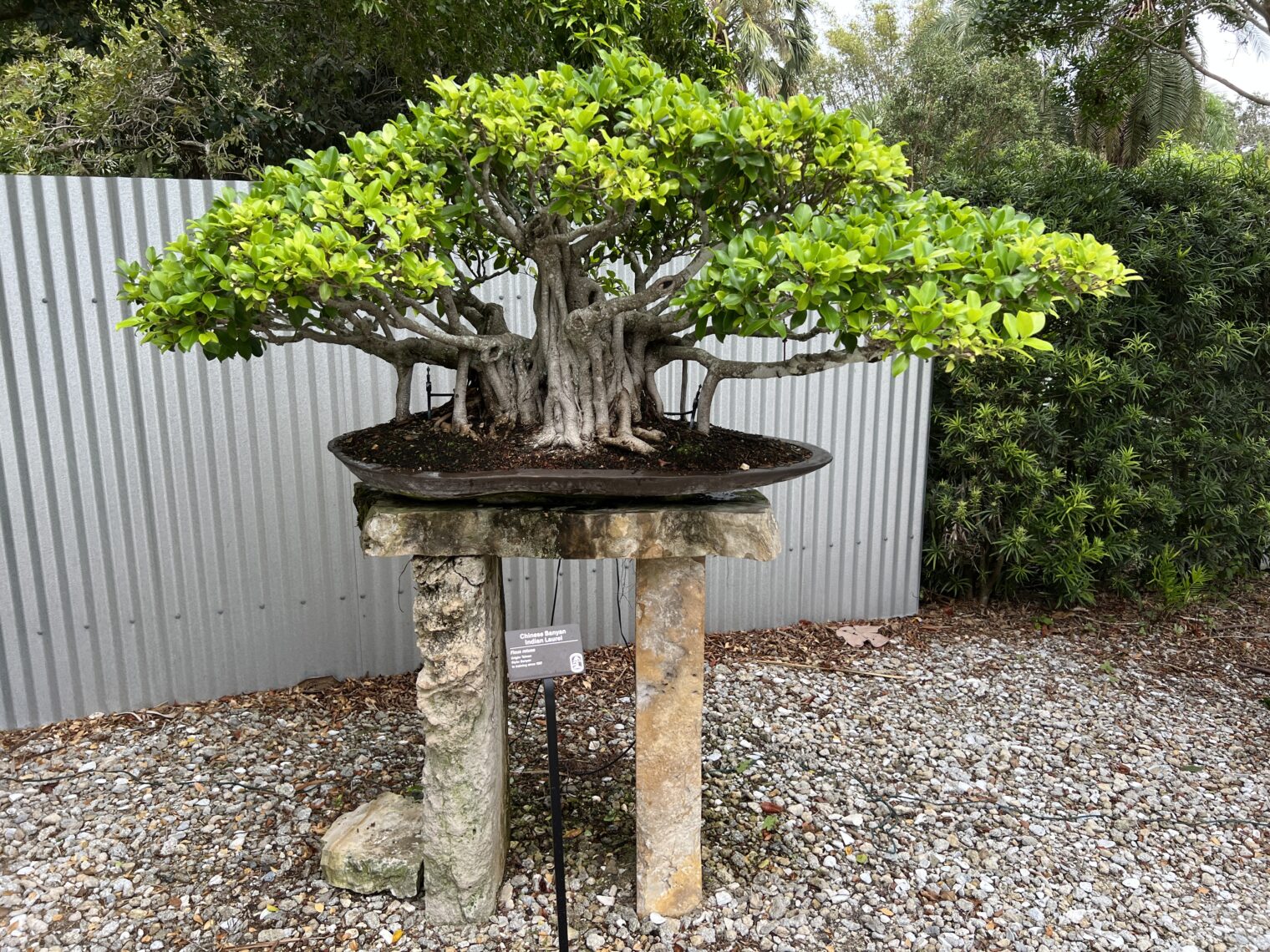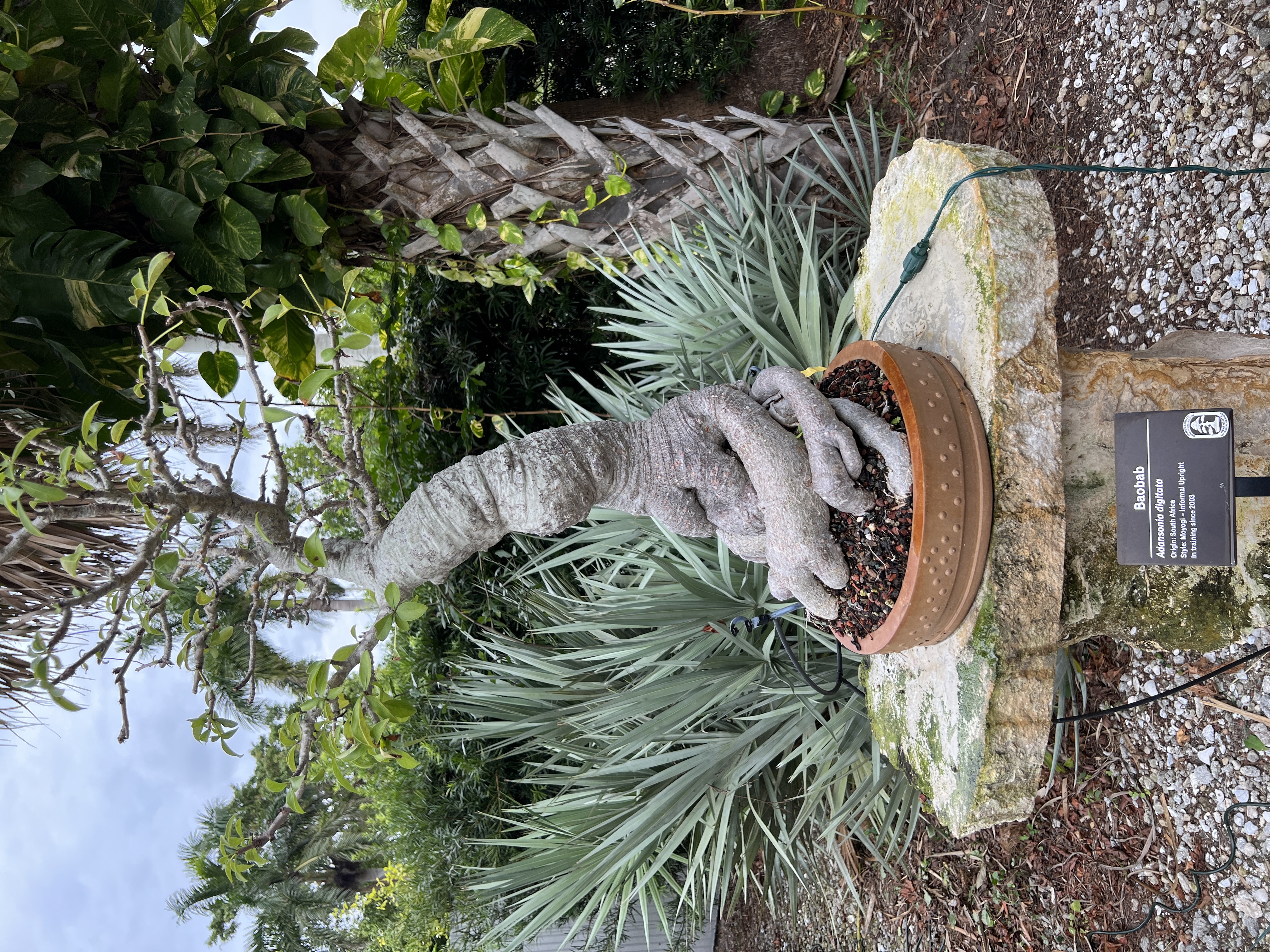From a New Yorker article on Ryan Neil, the founder of Bonsai Mirai:
That day [in 2002], [Masahiko] Kimura, who was then in his sixties, was working on an Ezo spruce with a spiky, half-dead trunk which was estimated to be a thousand years old. A photographer from the Japanese magazine Kindai Bonsai was present to document the process. Neil and the other visitors observed as Kimura, with the help of his lead apprentice, Taiga Urushibata, used guy wires and a piece of rebar to bend the trunk downward, compressing the tree—an act requiring a phenomenal balance of strength and finesse. Kimura misted the branches with water and wrapped them with thick copper wire. He then bent the branches—some slightly upward, some downward—arranging the foliage into an imperfect dome, with small windows of light spaced throughout the greenery. He worked with relentless focus, but what amazed Neil most was the synchronicity of Kimura and Urushibata: whenever Kimura needed a tool, he would wordlessly extend his hand, and Urushibata would have the implement waiting for him.
“So you want to apprentice here?” Urushibata said.
“I do,” Neil said.
“You should reconsider,” Urushibata said, then turned his attention back to the spruce.
How did Kimura become a legendary master?
Kimura is sometimes said to have done for bonsai what Picasso did for painting—he shattered the art form and then reëngineered it. Using power tools, he performed transformations so drastic that the resulting shapes seemed almost impossible. Moreover, his new methods allowed him to execute dramatic alterations in hours as opposed to over decades. Not surprisingly, his accelerated technique was admired and imitated throughout the West.
What about The Son Also Rises: economics history with everyday applications in which success is substantially attributable to genetics?
Masahiko Kimura was eleven years old when his father, a successful engineer, died suddenly.
Kimura apprenticed from age 15 to 26 and did not become a full-time bonsai artist until his late 30s.
Around this time, a thirty-year-old engineer working at Toyota named Takeo Kawabe visited Kimura’s bonsai garden, fell in love with the trees, and asked to become his apprentice. Together, they developed an arsenal of custom devices—sandblasters, small chainsaws, grinders—that made it easy to quickly shape deadwood into whorls and wisps. Using power tools, Kimura could hollow out thick roots, allowing him to coil them up in smaller pots; he could also bend stout trees, to make them appear smaller, or split them apart, to create forest-style plantings.
Everything is bigger and better now:
Of late, the fashion in bonsai has shifted to larger specimens, to accommodate the tastes of wealthy Chinese buyers, who display their prized trees in outdoor gardens rather than inside their homes, as Japanese people do. Kimura’s work, which is monumental by bonsai standards—some trees reached as high as my sternum, with trunks nearly as wide as my waist—was well suited to this trend, and he had profited greatly from it. He told me that he had recently sold a tree to the C.E.O. of a major Chinese tech company. “To them, a million dollars is like a pack of cigarettes,” he said.
The former apprentice rejects his master’s core innovation:
Neil pointedly avoids power tools; he never grinds or sandblasts. This leaves the grain with a nuanced texture laden with spidery fissures. When you lean in close to a classic Kimura tree, in each carefully sculpted curve of the deadwood you perceive the handiwork of the artist. When you lean in to one of Neil’s trees, you marvel at the handiwork of nature.
How does being one of the world’s greatest bonsai artists compare to filling a chair at a FAANG company?
Neil, now in his early forties, had chronic back pain and was developing arthritis in his fingers. His financial situation, he told me, was “hand to mouth,” and the chaotic nature of climate change was making it harder to keep his prized trees alive. … He has been in therapy for years, attempting to root out the odd mixture of insecurity and callousness that Kimura ingrained in him. During his six years in Japan, Neil was prohibited from dating. When he returned home, he began a relationship with a former schoolmate, and they had a son, but before long they broke up, leaving him a single father with a seven-day-a-week job and perilous finances.
(If the bonsai expert doesn’t earn a lot of money, the mother made the economically rational choice under Oregon family law to leave him with the child. Separately, the above phrase “they had a son” is ambiguous in modern American English. Does it mean that a pair of hetereosexual adults working together produced a son? Or that a non-binary solo adult (“they”) produced a miniature human?)
I won’t be investing $10,000-20,000 in one of Neil’s creations. This is partly because I don’t want to kill a $10,000+ tree via incompetence, but also because I don’t think the species that he works with can thrive in South Florida where they won’t experience cold weather (article that says cold weather/dormancy is essential for temperate species). Florida does have its share of bonsai artistry and commercial bonsai production, but the popular species are adapted to the subtropics. Heathcote Botanical Gardens in Fort Pierce has a substantial collection that was developed by James J. Smith. Here are some photos from an October visit:





Another favorite place is Robert Pinder’s Dragon Tree Bonsai just west of Stuart, Florida. The most interesting stuff is not for sale, but can be enjoyed. A more commercial operation, which can be a good source for supplies such as stone lanterns, is H&F Imports, a.k.a. Sunshine Tropical Gardens, in Davie, Florida.
One nice thing about Florida is that keeping a bonsai in the back yard can be done with zero effort. Just place them where the HOA’s sprinklers will hit them (with “reclaimed water”; maybe best not to ask where this comes from) and Nature takes care of the rest. I did move ours under an alcove for overnight shelter from Hurricane Nicole.
Related:
- YouTube channel for Bonsai Mirai; not deplatformed yet so presumably he hasn’t questioned Biden administration bonsai policy
This post and the external links, taken together, make me believe in America by way of Japanese Bonsai trees and high-end horticulture, especially because I know there must be dozens of other organizations around the country.
I have a relatively low “barrier to entry” these days. The other morning I was standing in a brand-new CVS store and I just marveled at the variety and quality of the self-care products available on dozens of shelves around the store. Just stroll around and get what you need, and if it’s not there, it’s on Amazon or on dozens of other boutique websites. One thing this country is still good at is getting essential products and non-essential products into people’s hands at a reasonable price. Perhaps only a few, including Japan itself, do a better job.
If I was deTocqueville, I would be as amazed at all the abundance as he was back in 1835, even much of it begins elsewhere. Americans, alas, often don’t appreciate what they have. And I’ll guarantee that Louis Philippe I didn’t have access to first-line health care products that can hold a candle to what some prole can buy off the shelf with a 10 minute drive.